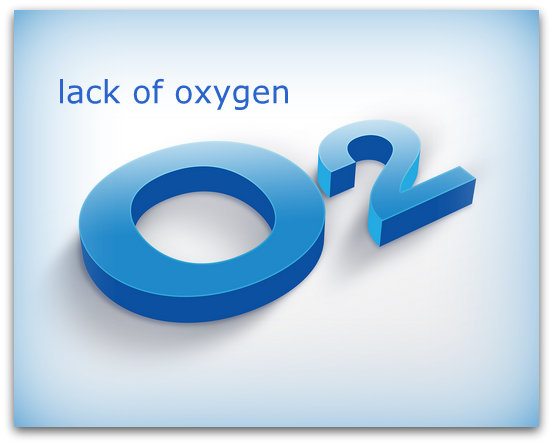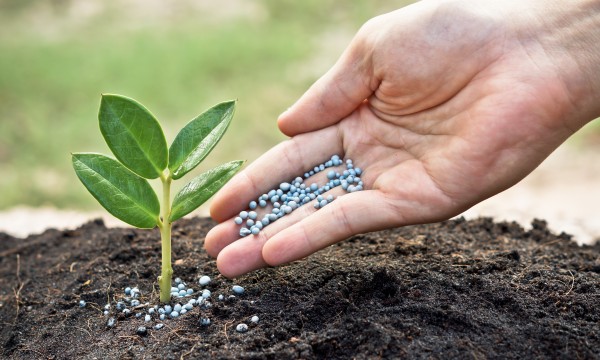The Causes of Oxygen Depletion

All living organisms depend on water supply and many of them live in water. Most of these aquatic animals respire aerobically and so require oxygen from their environment. Any change that alters the amount of oxygen in the water can seriously affect the suitability of the water as a habitat. The two pollutants that most often reduce oxygen in water are:
1. Fertilizers- nitrates and phosphates are added to the soil by farmers. Some of the fertilizer is washed from the soil by rain into the nearest pond, river, or lake. This process is called leaching.
2. Sewage- this contains an excellent source of organic food for bacteria, and also contains phosphates from detergents.
How do Fertilizers and Sewage affect Oxygen Concentration?

Water that contains few nutrients is rich in oxygen and supports a wide variety of living organisms. The oxygen enters the water from the atmosphere by diffusion and from photosynthesizing aquatic plants. Simpler forms of life, such as algae and bacteria, are controlled because the low concentration of nutrients such as nitrate is a limiting factor for their growth. If more nutrients are made available, from fertilizer runoff or from sewage, then:
1. Algae and other surface plants grow rapidly and block out light to plants rooted in the bottom of the river or pond. As a result, the rooted plants die, and their bodies provide even more nutrients.
2. The population of bacteria increases expeditiously as they multiply, the bacteria consume oxygen for aerobic respiration. There is now a biological demand in the water because of the consumed oxygen by these microbes.
3. Other living creatures cannot obtain enough oxygen. They must leave the area if they can, or they will die! Their bodies provide even more food for bacteria, and the situation becomes even worse. This is an example of positive feedback- the greater change from ideal conditions.
Important rivers such as the Indus and its tributaries are affected by the uncontrolled inflow of fertilizers. The process is called eutrophication. The pond or river soon becomes depleted of living organisms. Only a few animals, such as “Tubifex” (sewage worms), can respire at the depressed oxygen concentration that is available.
The solution to this problem is straightforward- do not allow excess nutrients into the water.
Eutrophication

Causes
- Unnaturally high levels of nutrients
- From leaching of fertilizers
- From the input of raw sewage
- From liquid manure (slurry) washed out of farmyards
Effects
Depleted oxygen levels in water cause the death of fish and most invertebrates. Moreover, high nitrate levels can be perilous to human babies.
Solutions
- Treat sewage before it enters rivers.
- Prevent farmyard drainage from entering rivers and ponds.
- Bubble a stream of air through inadequately polluted ponds.
- Control the use of fertilizers by following the steps listed below:
- Apply only when crops are growing
- Never apply to bare fields
- Do not apply when rain is forecast
- Do not dispose of waste fertilizer in rivers and ponds
As seen on:


Excellent blog here! Also, your website loads up fast! What host are you using? Can I get your affiliate link to your host? I wish my website loaded up as quickly as yours, lol!
Hello Hye,
Thanks so much for your appreciation & love.
Kindly message me directly to discuss the affiliate links 🙂
An interesting discussion is the price comment. I believe that you should write more on this matter. It may not be a taboo subject however, typically, individuals are not sufficient to speak on such topics.
To the next. Cheers
I simply wish to say your article is astonishing. The clearness is simply excellent, and I can assume you’re knowledgeable in this subject. Fine together with your permission, let me seize your RSS feed to keep up to date with approaching posts. Thanks one million, and please keep up the rewarding work.
This is very interesting. You’re a very skilled blogger. I have joined your RSS feed and look forward to seeking more of your excellent post. Also, I’ve shared your website on my social networks!
Hi my friend! I want to say that this post is awesome, nicely written, and includes almost all vital info!
Hello there,
I found your blog using MSN. This is a highly well-written article. I will make sure to bookmark it and return to read more of your helpful information. Thanks for the post!
Pretty nice post. I just stumbled upon your weblog and wish to say that I have truly enjoyed browsing your blog posts.
Do you mind if I quote a few of your posts as long as I provide credit and sources back to your website? My blog site is in the very same niche as yours, and my visitors would benefit from the information you provide here. Please let me know if this is ok with you. Thank you!
Hey Sean,
Sure, dear! With the credit and sources back to my website, you can share it on your site.
I agree with all of the ideas you presented in your post. They are compelling and will definitely work.
Still, the posts are concise, for starters. Could you please extend them a bit from next time?
Thanks for the post.
Hey Alfonzo,
Thank you so much for your response, appreciation & love. It means a lot!❤️
I would definitely work on more extended writeups, stay tuned, dear!
See you again on my blog <3
I just want to say your article is fantastic. The clearness in your post is simply excellent, and I can assume you are an expert on this subject.
With your permission, let me grab your feed to keep updated with forthcoming posts. Thanks a million, and please keep up the rewarding work.
My dear, Belia,
Thank you so much for your response, appreciation & love. It means a lot!❤️
Stay tuned for more impressive writeups coming your way!
See you again on my blog <3
Great!!!
I should certainly say, impressed with your site. I had no trouble navigating through all the tabs and related info; everything was easily accessible. I found what I was looking for on your site.
Thank you for adding the forums, site theme, and a toned way for your client to communicate. Excellent task!
Hey Todd,
Thank you so much for your response, appreciation & love. It means a lot!❤️
See you again on my blog <3
Wow! Thank you!
I always wanted to write something like that on my website. Can I include a part of your post on my site?
Hey Lizette,
Thank you so much for your response and appreciation.
If you wanna include my article on your site, kindly share the link there, not the same content/article.